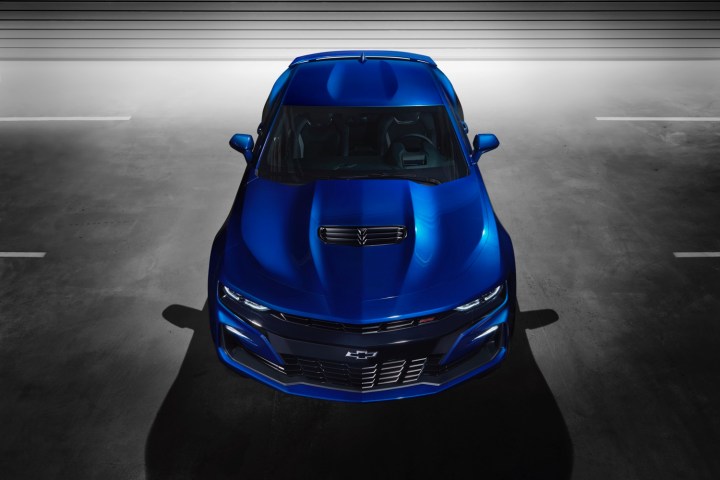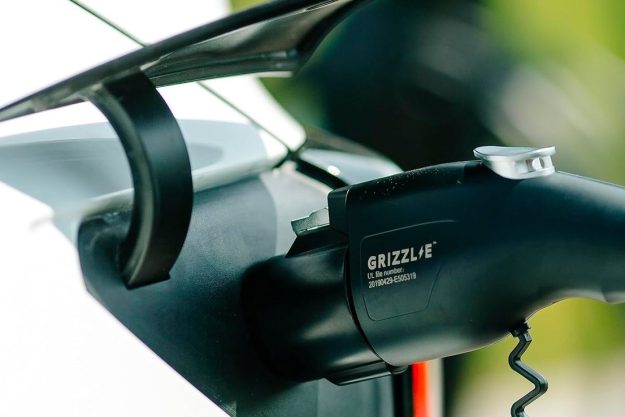
Chevrolet’s Volt and Camaro models may soon have more than a bowtie-shaped emblem in common. The Detroit-based company is considering launching a hybrid variant of the Camaro that would leverage the benefits of electrification to achieve a significant boost in power and fuel economy.
Chevrolet has started sending select Camaro owners a survey to get insight on how muscle car fans would react to a hybrid option, according to a post on an enthusiast forum. The survey lists two different drivetrains, though it stops short of providing full technical details — like the transmission they would shift through or the size and chemistry of the battery pack — for each one.
The first option is built around a turbocharged, 2.0-liter four-cylinder engine. Adding electrification boosts the drivetrain’s total output to 365 horsepower while bumping fuel economy in a combined cycle to 30 mpg. The turbo four-electric Camaro would hypothetically take 4.4 seconds to reach 60 mph from a stop. To add some context, the 2019 Camaro‘s base engine is a 2.0-liter four that makes 275 hp and returns 25 mpg in a mixed cycle. The entry-level Camaro performs the 0-to-60-mph sprint in 5.4 seconds.
The second hybrid option uses the mighty, 6.2-liter V8 as its central component. The electric motor bumps the system’s output to 545 hp, lowers the 0-to-60-mph time to a brisk 3.7 seconds, and makes a 24-mpg fuel economy rating possible in a combined cycle. Without the hybrid boost, the V8-powered Camaro offers 455 hp, does 0-to-60 in four seconds flat, and returns 19 mpg.
Here’s the catch: Chevrolet’s survey explained the four-cylinder hybrid system would add a $4,000 premium to the Camaro while the technology for the eight-cylinder engine would make the model $8,000 more expensive. That may be hard to swallow for enthusiasts, especially considering the Camaro has always proudly championed the concept of delivering performance at a relatively affordable price. And, there’s no word yet on the effect the extra weight added by the battery pack would have on handling.
Chevrolet hasn’t commented on the survey, and it hasn’t revealed what the future holds for the Camaro’s portfolio of powertrains. We know the Ford Mustang, the Camaro’s arch nemesis since the late 1960s, will receive a hybrid option in the coming years — Ford may have already teased it. Rumors claim the next-generation Corvette will go hybrid, too, so we wouldn’t be surprised to see a hybrid emblem on a Camaro trunk lid in the not-too-distant future.
Editors' Recommendations
- 2020 Chevrolet Camaro vs. 2020 Ford Mustang
- Chevrolet Camaro ZL1 1LE NASCAR racer is a distinction without a difference
- Chevrolet’s one-of-a-kind electric Camaro drag racer is now for sale
- 2020 Chevrolet Camaro gets a face-lift to erase controversial styling




